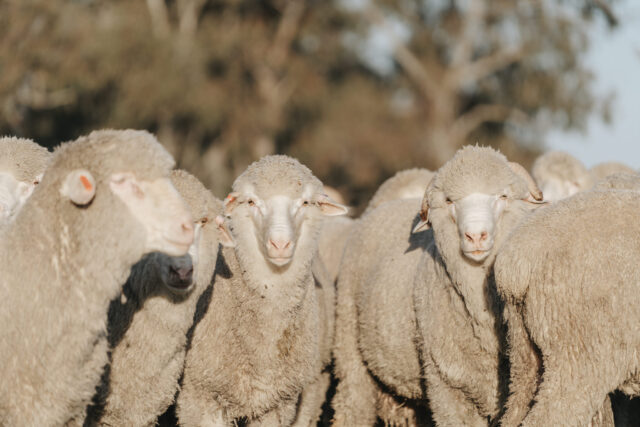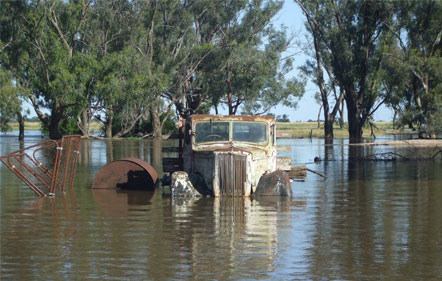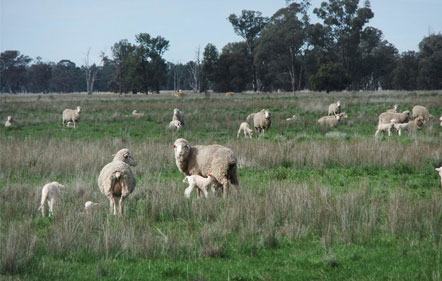Breeding Principles
The breeding direction at Richmond follows the system developed by Dr Jim Watts based on Moore’s pre-papilla cell hypothesis of follicle formation and fibre growth. The system is based on the conclusion that the skin of a sheep that is loose and thin (as opposed to the industry preferred thick skins) is biologically more likely to produce higher follicle densities of finer, superior processing and longer fibres.
THE SCIENCE BEHIND FOLLICLE DEVELOPMENT
There are three types of wool follicles in the skin of a sheep: primary follicles which appear at about 65 days in the developing foetus; secondary follicles which appear at about 85 days; and secondary derived follicles which branch off the original secondary follicles at about day 105. These wool follicles are arranged in’ follicle groups’ which can vary in size and shape between animals. Each group consists of 3 primaries which have sweat glands attached to them and a genetically pre-determined number of secondary originals usually numbering around 15 per group and varying slightly depending on the animal. The secondary derived follicles vary greatly between animals and may number over 100 per follicle group. It is usually the number of secondary derived follicles that create the greatest difference in density between animals and if the animal has a high number of these then the fibres are finer and more aligned creating a higher quality fleece.
In the foetus prior to follicle development the dermis of the skin is mainly compiled of cells called fibroblasts. Fibroblasts produce collagen which is the main connective tissue component of the skin and is secreted into the dermis to form fibrils. It is these collagen fibrils that intermesh and form skin wrinkles. Some of these fibroblasts however change into pre-papilla cells which then group together to form wool follicles. If a large proportion of fibroblasts turn into pre-papilla cells then there is the opportunity for many wool follicles to be formed which will happen provided they are distributed frugally. The key to this process lies in the genetically pre-determined ability of the sheep to allocate only a limited number of cells to the development of the primary fibres. This leaves many cells for secondary and eventually secondary derived follicle development. Consequently if the genetic framework is right and providing there is a high number of starting cells the animal will produce a thin skin with high numbers of fine and highly aligned secondary and secondary derived fibres.
There are some important visual indicators that tell us when this biological process is in place. Firstly the traditional thick, locky staple is replaced by closely packed fibre bundles which are about the size of a matchstick. These bundles have a crimp that is much deeper and bolder than their micron would suggest. They are very well aligned with no cross fibres giving the fleece a floppy appearance often resulting in the wool falling over and opening up along the backline. The fibres are also extremely long as there is a strong correlation between thin skins and length of staple and conversely a negative correlation between fleece length and body wrinkle. And finally if inspected off shears the sheep is plain bodied and completely wrinkle free with a loose and supple pelt that can be easily lifted and stretched away from the animal. It is important to remember that high fleece weights on wrinkly sheep are simply caused by the extra skin creating a larger surface area to grow wool. Breeding wrinkles on sheep is a very dangerous shortcut to increasing fleece weight. It brings with it a multitude of problems such as fleece rot, low fertility and poor constitution as well as the gradual deterioration of fleece quality as the primary fibres increase in size and the animal slowly regresses towards its primitive two coated ancestor.
At Richmond we firmly believe that the biology behind in the manipulation of major gene functions such as those that control lower primary fibre diameter will deliver us increasing levels of follicle density with a fibre that will be superior in quality to anything the industry has produced to date on an animal that is fertile, robust and sustainable.
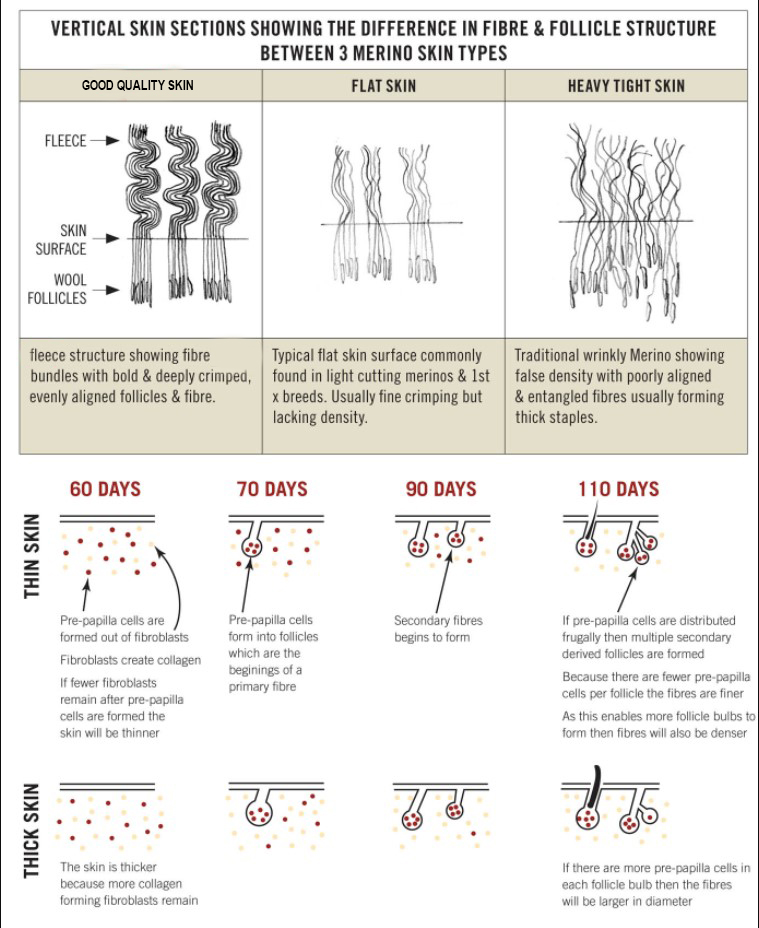
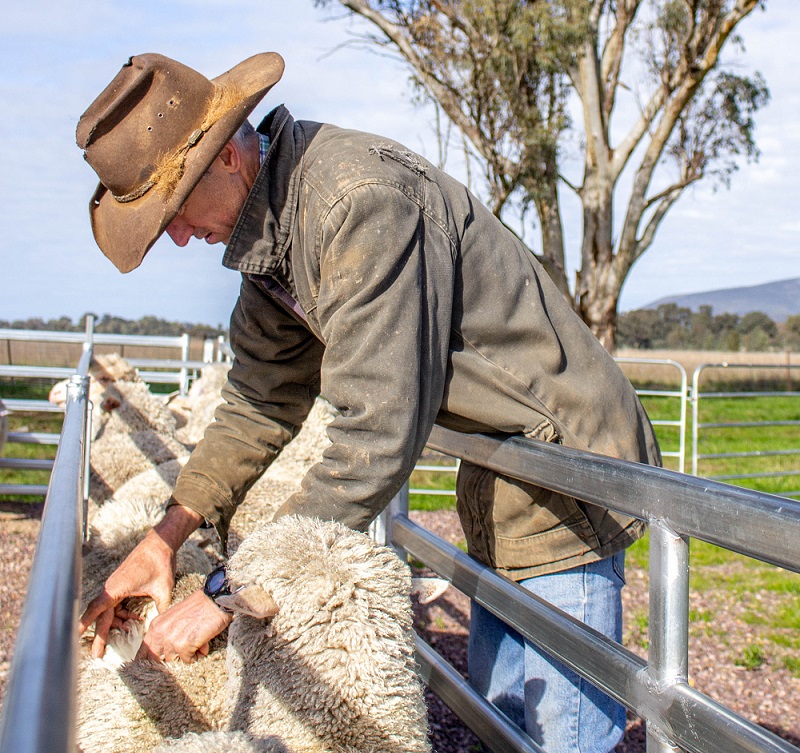
Classing Procedures
At Richmond we are focussed on a balanced approach to classing combining visual appraisal with judicious use of measurement which mostly comes in the form of ASBVs (Australian sheep breeding values). We strongly believe that the two selection methods should compliment each other and the balanced use of both is the most efficient way to move our flock forwards. Every ewe is visually assessed in the race on an annual basis and must pass a stringent criteria based on skin structure, fibre quality and confirmation. It is only then that the animals raw measurements and ASBVs are studied and if she falls outside the acceptable parameters then she is either culled or relegated from the stud into the commercial flock. During stud joining every ewe is carefully matched to a sire that will enhance her strengths and correct any weaknesses and there are no traditional’ special stud’ and ‘double stud’ mobs or any distinct family groups.
There are 5 components that control our selection procedure creating the Richmond phenotype and encompassing what we believe are the major profit drivers of a commercial enterprise.
- SKIN STRUCTURE- The sheep must be plain bodied with no visible wrinkle evident possessing a skin that is thin and supple.
- FIBRE- The wool must be silky soft and highly aligned with a crimp that is deep and bold for its micron forming small fibre bundles as opposed to traditional thick staples. It should be white and free of suint, evenly nourished and very long.
- GROWTH- A concerted effort has been made over time to continually improve growth and carcase traits as we feel the merino of the future must have a strong meat focus and be competitive in this aspect with all other breeds. An emphasis is placed on early maturity and rapid early weight gain enabling lambs to meet specific markets. Muscle development and fat cover are also given high priority with all ram and ewe lambs scanned for these traits as yearlings. Muscle depth and fat cover have historically been overlooked and greatly underestimated traits within the merino industry however in recent years valuable research work has identified strong links between these traits and other important profit drivers such as fertility, constitution, lamb survival and parasite resistance.
- FERTILITY- We consider fertility to be a major profit driver under current market conditions. High lambing percentages enable self-replacing flocks to place more selection pressure on their breeding ewes resulting in greater genetic gain and a higher turnover of sale sheep. At Richmond all dry ewes are culled and a strong emphasis is placed on twinning resulting in regular weaning percentages of over 120%. Don’t take notice of outdated theories that merino flocks do not need to be highly fertile. The modern merino is a dual purpose animal with wether lambs and surplus sheep sales forming in most cases over 50% of the flocks annual income.
- CONFIRMATION- It goes without saying that all our sheep must be structurally correct and this is the first thing we look at in the classing race. We like our sheep to have long bodies and good neck extension with a triple wedge body shape. We are also aware that with increased selection pressure on early growth and high muscling we also need to maintain length, ground clearance and the framework that enables animals to reproduce, forage and grow both meat and wool under less than perfect grazing conditions.
MEASUREMENT AND AUSTRALIAN SHEEP BREEDING VALUES
At Richmond we combine Australian Sheep Breeding Values with wool tests and raw data to drive our selection decisions.
All rams are side sampled each year as close as we can practically get to sale date which usually means about early August. We use OFDA fibre measurements as it gives a more accurate reading of higher quality wools being superior to laser scan at picking up ultra-fine fibres below 10 micron. We place strong emphasis on selection for animals with high comfort factors and low CVs as we feel these measurements give a better reflection of fibre quality than micron alone.
We use Australian Sheep Breeding Values (ASBVs) which we feel form an integral part of decisions at classing time and more specifically at joining when determining which rams will compliment which ewes and vice versa. ASBVs are an estimation of an animals true genetic merit. They are generated by taking into consideration many factors that may affect the animals genotype that may not necessarily be expressed visually. Some of these factors include differing birth dates, twins or singles, hereditary influences of parents and ancestors and differing environmental and management influences across flocks(ie how well they have been fed). These factors are then used in conjunction with the animals raw measurements to create a breeding value for a particular trait. If the animal has ancestors that also have recorded data then the accuracy of the breeding value increases. Being a commercially focused stud with no production feeding regimes we have embraced ASBVs not only because they are a more accurate guide than raw figures but also because it gives both us and our clients the ability to benchmark ourselves against other flocks on a level playing field.
Feeding Philosophy
At Richmond we are not interested in any form of show ring activity, shedding or feeding regimes that are designed to artificially pump up sale sheep. Rams that are shedded have no exposure to environmental influences and their fleeces will generally remain white and free of weather damage no matter what their genetic makeup may be. Even a limited amount of shedding prior to sale day will have a noticeable visual effect on how the animals fleece presents. Buyers are often disappointed when the rams progeny display suint or fleece rot.
Likewise rams that spend most of their lives on self- feeders or show feed mix will always be bigger and fatter with more muscle depth than their paddock run counterparts. Their true carcase traits are not visually expressed with muscle depth and fat cover being especially difficult to determine. Once again the buyer is often disappointed as the rams usually go backwards when they are taken off their extreme plane of nutrition and more importantly their progeny are never able to achieve the growth rates that are expected of them. There is also strong evidence that overfed rams can suffer from both short term and in some cases permanent fertility problems.
Richmond sale rams are all paddock run and given every opportunity to express their faults before sale day they are extensively tested with data collected for multiple traits and have pedigrees going back in some cases up to six generations. All this helps us to develop increasingly accurate breeding values which gives our clients the confidence to make educated decisions when selecting their future sires.
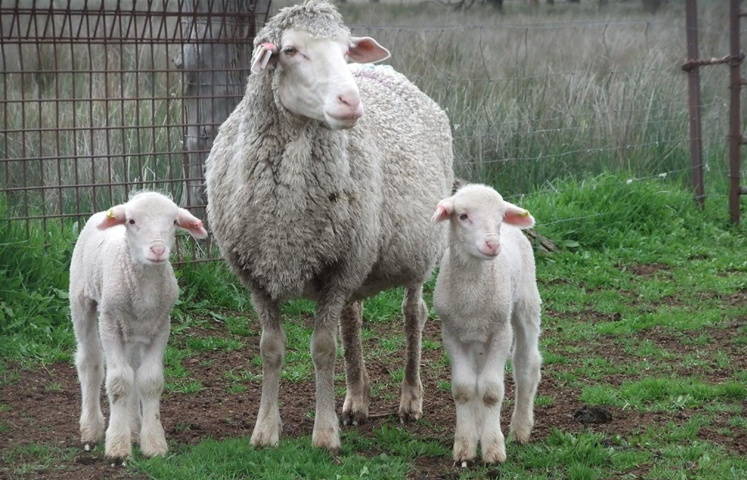
Ethical and Eco-Friendly Production
In recent years ethics and sustainability has become increasingly important within agriculture. There is growing worldwide pressure for producers to place more emphasis on this part of their enterprise but despite this large sections of the wool industry have ignored this growing consumer driven movement. To remain productive we must move with these market forces rather than fight against them. The Richmond phenotype allows us to produce a clean green product with limited chemical use and ethical animal husbandry practices. Our waterproof wools grown on wrinkle free bodies have enabled us to cease jetting(or back-lining) for body strike since 2004 and our plain wrinkle free breeches have allowed us to stop mulesing eliminating the process in 2005. Throughout this time and despite much industry scepticism our production levels have actually increased.
Client Service
At Richmond we are firmly committed to standing by our product. The profitability of our clients enterprise is of utmost importance to us and we are more than happy to assist in any way whether it be through a full annual classing program or just simply calling in for a chat and a quick look over the rams we enjoy the opportunity to have a hands on look at the direction of our clients flocks.
All clients receive a free of charge annual classing of all sheep. Rams are guaranteed with credit available for any animals that upon inspection have failed to perform at a satisfactory level in the 12 months following purchase.

 “Richmond” Quandilla, NSW 2721
“Richmond” Quandilla, NSW 2721 0437 153 765
0437 153 765
